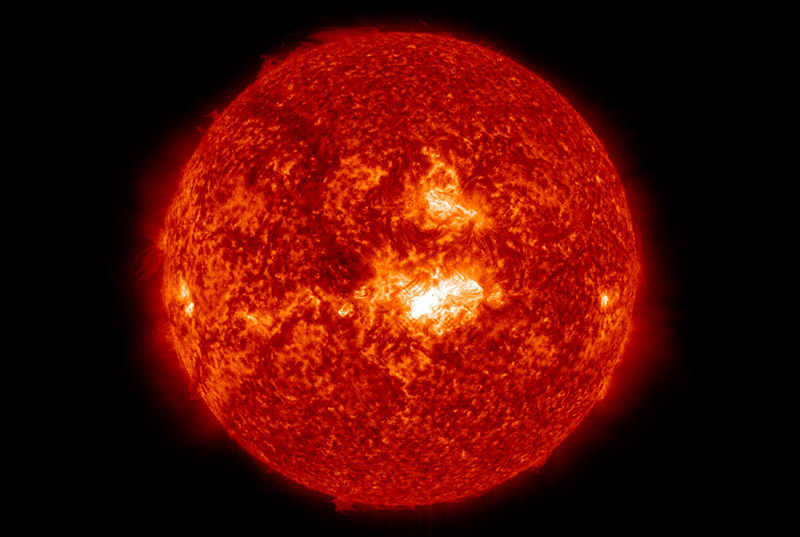While Kazakhstan sits atop some of the world’s largest oil reserves and builds capacity in the alternative energy sphere, its scientists and engineers have started looking towards the stars for answers.
High-profile physicists and cosmologists from eight countries have gathered this week at Nazarbayev University in Astana for an international conference billed under the heading “Exploring the Energetic Universe 2017.” Experts are there to discuss the potential of space-based solar power (SBSP), or collecting solar power in space and distributing it across earth.
“We are working to build a joint international laboratory and a telescope in Kazakhstan, which will study space and solar energy,” American astrophysicist, cosmologist and Nobel Prize laureate George Smoot said on Monday while addressing the conference.

The telescope, which will be constructed 76 kilometers southeast of Almaty, will be used to observe short bursts in space and is expected to be one of the most powerful in the world. At a cost of about half a million US dollars, the project will receive financial support from Kazakhstan’s Education and Science Ministry. Planned to launch next year, the telescope’s construction aims to boost international scientific interaction and collaboration.
“We are planning to transmit data received from outer space to other universities, and exchange our views. We want Kazakhstan to be one of the first countries in Central Asia with advanced technology in astronomy,” Smoot stressed.
The eight-day conference is being held alongside the EXPO 2017, a large-scale specialized exhibition that runs from June 10 – September 10 in Astana. More than 100 countries are participating in the expo, which has “Future Energy” as its theme and aims to find solutions for ensuring safe and sustainable access to energy for all while reducing carbon emissions.
Kazakhstan, being Central Asia’s largest economy, is rich in natural resources like oil, natural gas, anthracite and bituminous coal, and currently generates 87 percent of its total installed capacity of electricity from fossil fuels, while only 0.3 percent comes from renewables, according to US government figures.
Despite all of this, Astana intends to generate 50 percent of country’s electricity from renewables by 2050 in accordance with a concept of transition to a green economy adopted by President Nursultan Nazarbayev. Astana realizes that along with environmental concerns, the country’s economy suffers from an overreliance on hydrocarbons, particularly oil, which is subject to global price fluctuations.
The government has initiated a series of programs, including the Green Bridge Partnership Program in 2011, in a bid to strengthen economic growth in Central Asia and address economic inequality in country’s remote regions. In 2012, the solar power plant “Otar” was launched in Kazakhstan’s southeastern Zhambyl region, becoming the first renewable energy system in Central Asia.
Officials in Astana developed Kazakhstan’s first “Concept for Transition to Green Economy” one year later, outlining how the country would build a stable and efficient economic model based on renewable resources, to be used in housing and communal services, farming, waste and water management systems, and transportation.
Since the concept was launched in 2013, more than 50 solar, wind and hydropower stations have been built and launched in Kazakhstan, while 54 stations with a capacity of over 1,700 megawatts are being built or being designed.
Earlier this summer Kazakhstan and the European Bank for Reconstruction and Development signed an agreement for financing a project to expand a solar power plant known as Burnoe Solar–2, also located in Zhambyl region, which together with Burnoe Solar–1 form one of the largest solar generation facilities in Central Asia.







 Russian peacekeeping forces, deployed in the Karabakh (Garabagh) region of Azerbaijan since 2020, have commenced their withdrawal from the area.
Russian peacekeeping forces, deployed in the Karabakh (Garabagh) region of Azerbaijan since 2020, have commenced their withdrawal from the area.
 Azerbaijan officially unveiled the logo for the upcoming 29th session of the Conference of the Parties to the United Nations Framework Convention o...
Azerbaijan officially unveiled the logo for the upcoming 29th session of the Conference of the Parties to the United Nations Framework Convention o...
 The Kazakh authorities have increased their arbitration claims against international oil companies involved in the development of the Kashagan oil ...
The Kazakh authorities have increased their arbitration claims against international oil companies involved in the development of the Kashagan oil ...



